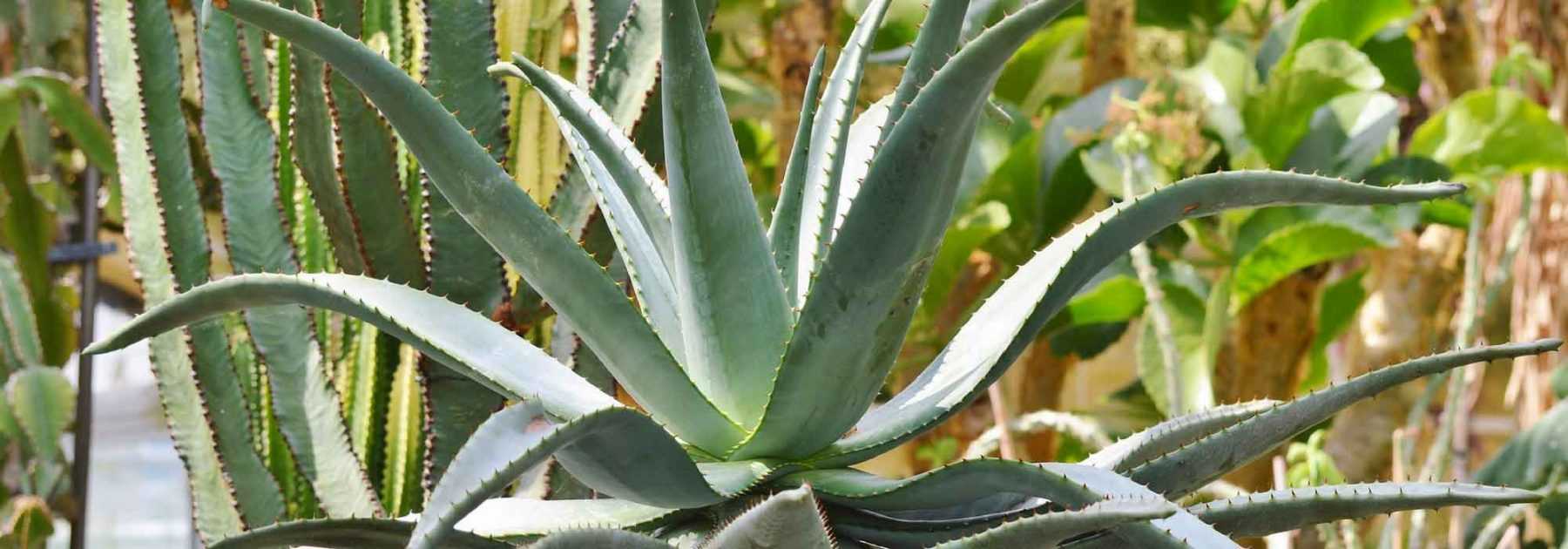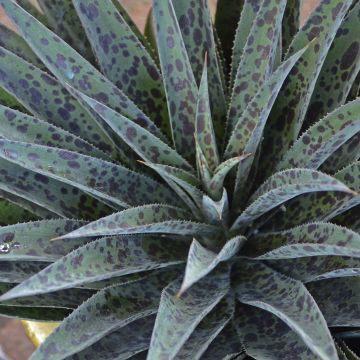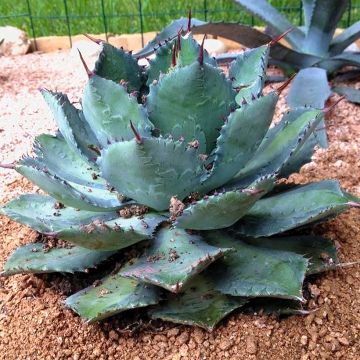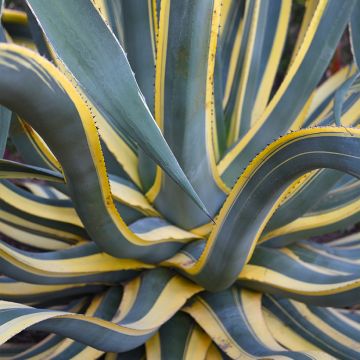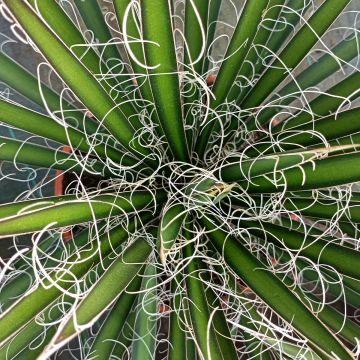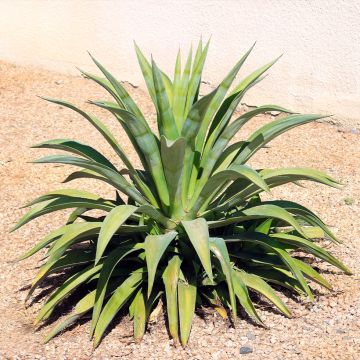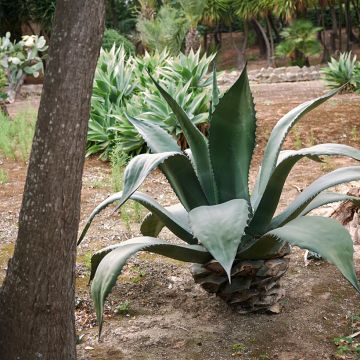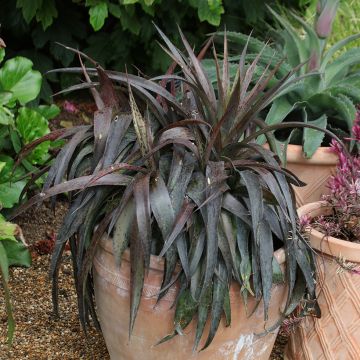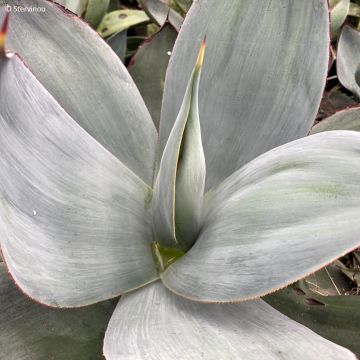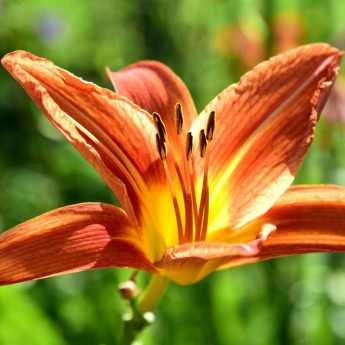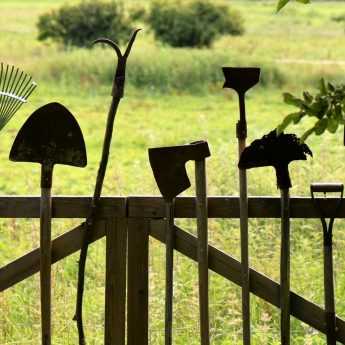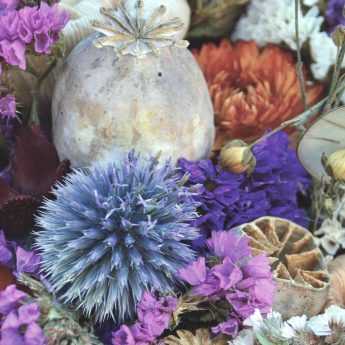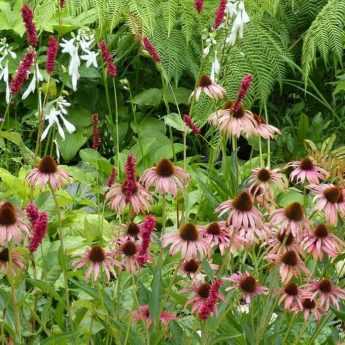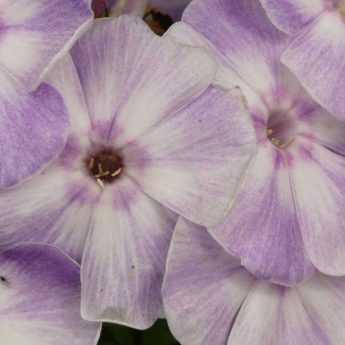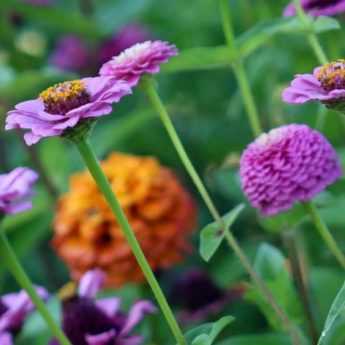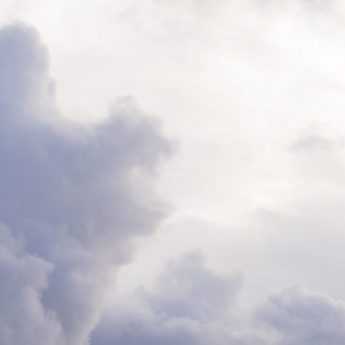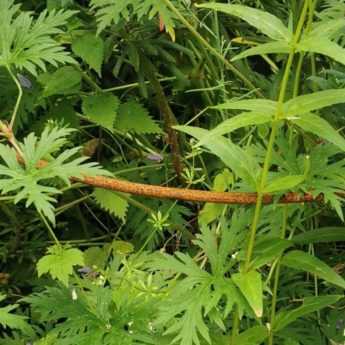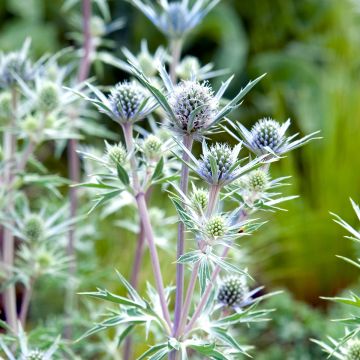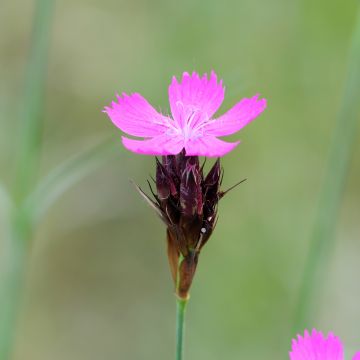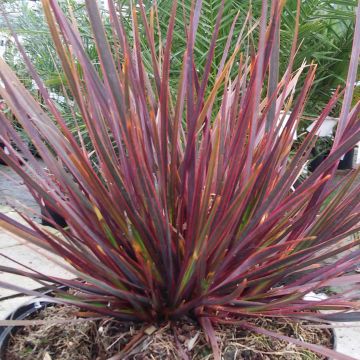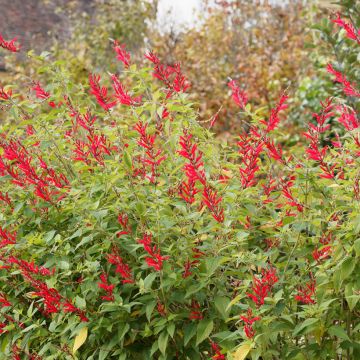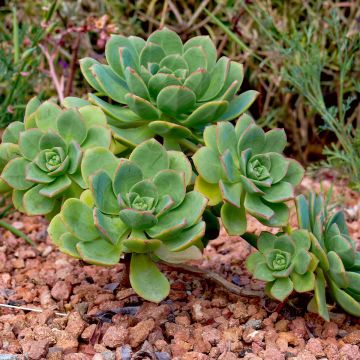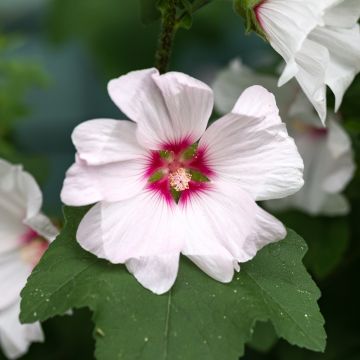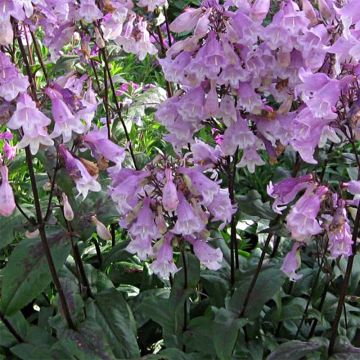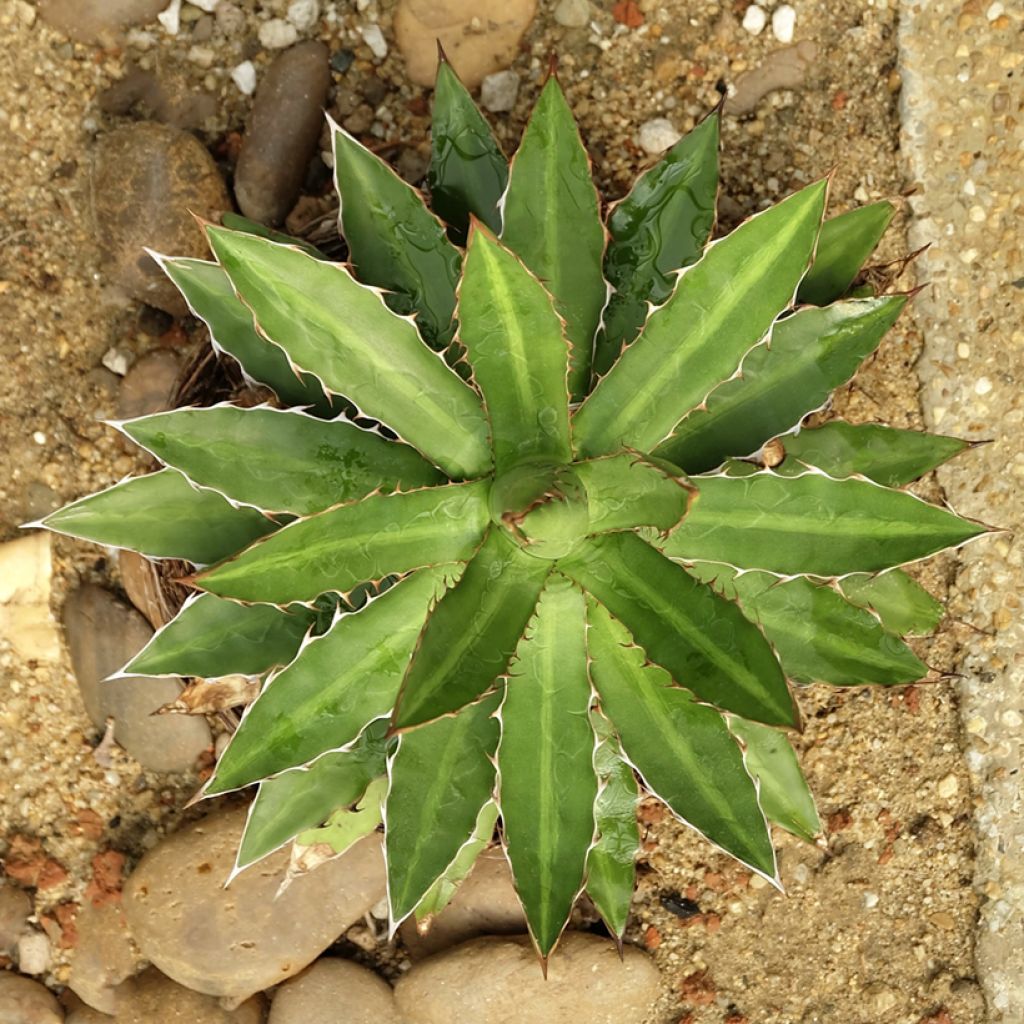

Agave lophantha - Striped agave, thorny crested agave
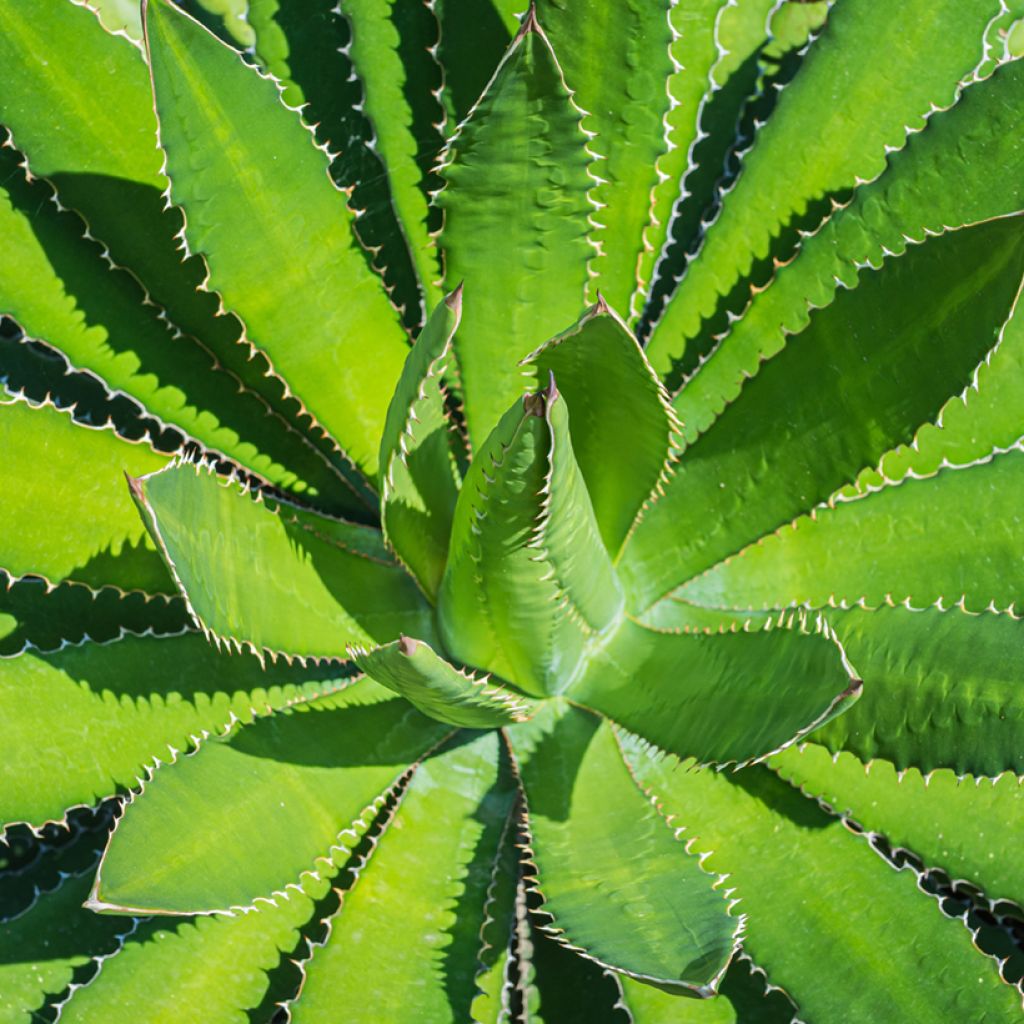

Agave lophantha - Striped agave, thorny crested agave
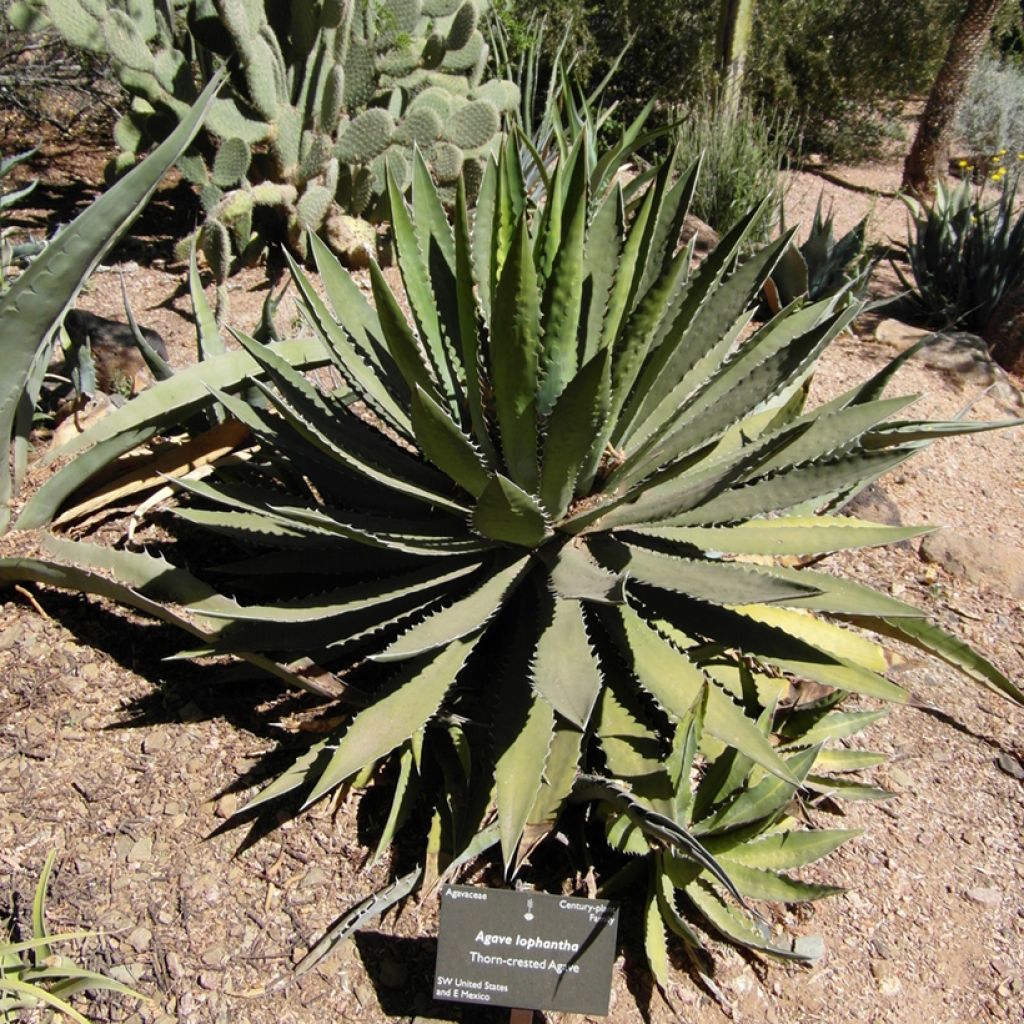

Agave lophantha - Striped agave, thorny crested agave
Agave lophantha
Agave lophantha
Home or relay delivery (depending on size and destination)
Schedule delivery date,
and select date in basket
This plant carries a 12 months recovery warranty
More information
We guarantee the quality of our plants for a full growing cycle, and will replace at our expense any plant that fails to recover under normal climatic and planting conditions.
Would this plant suit my garden?
Set up your Plantfit profile →
Description
Agave lophantha, also known as thorny crested agave or thorny crested century plant, is a beautiful succulent perennial highly sought after in landscaping for its bright and regular rosette. Its foliage, marked by a lighter central stripe, exudes elegance. Perfectly adapted to dry climates, poor soils, and harsh conditions, this species is fairly cold-resistant: down to -12°C in dry soil. Like all agaves, it is well-armed: the edges of the leaves are lined with small sharp thorns, and each leaf ends in a prickly tip that requires careful handling. It can be grown in the ground in milder climates, but also in large pots to be kept indoors during winter in colder regions.
Agave lophantha (synonymous with A. univittata) is native to Mexico and the southern United States, particularly the coastal regions of southern Texas and northeastern Mexico, including the plains of the Rio Grande. It is found at altitudes below 100 m, growing in dry, well-drained, rocky soils, often on limestone outcrops and cliffs. This perennial belongs to the Asparagaceae family, alongside Yuccas and Dasylirions. More compact than Agave americana, this species reaches about 60 cm in height and width at maturity. It forms a rosette of tough, upright, trough-shaped, heavily thorned leaves with serrated edges, ranging in colour from dark green to blue-green, with a lighter central stripe. At maturity, after several years of growth, Agave lophantha produces a flower spike that can reach 2 to 3 m in height. This floral stem bears yellowish-green to reddish flowers arranged in hemispherical panicles. The flower spike emerges from the heart of the rosette, signalling the end of the mother plant's life. However, this semelparous perennial ensures its legacy through numerous offsets produced at its base, allowing it to regenerate.
By the seaside, Agave lophantha is an easy-to-grow plant for open ground in well-draining soil. It thrives outdoors in full sun. Plant it in a rockery, gravel bed, or dry garden. It pairs wonderfully with Opuntias (prickly pears), Dasylirion, Mediterranean spurge, or ornamental grasses for dry soil. In colder regions, it is best grown in a large pot, placed in full sun and protected from excessive frost in winter. This low-maintenance, decorative agave is a reliable choice for adding character to your terrace!
Agave lophantha in pictures
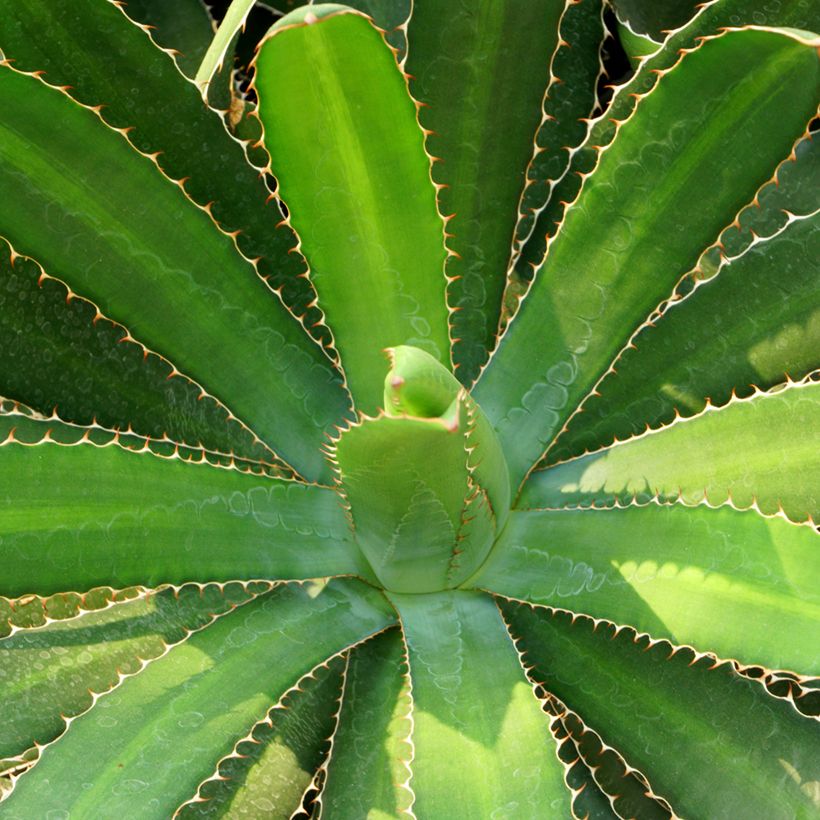

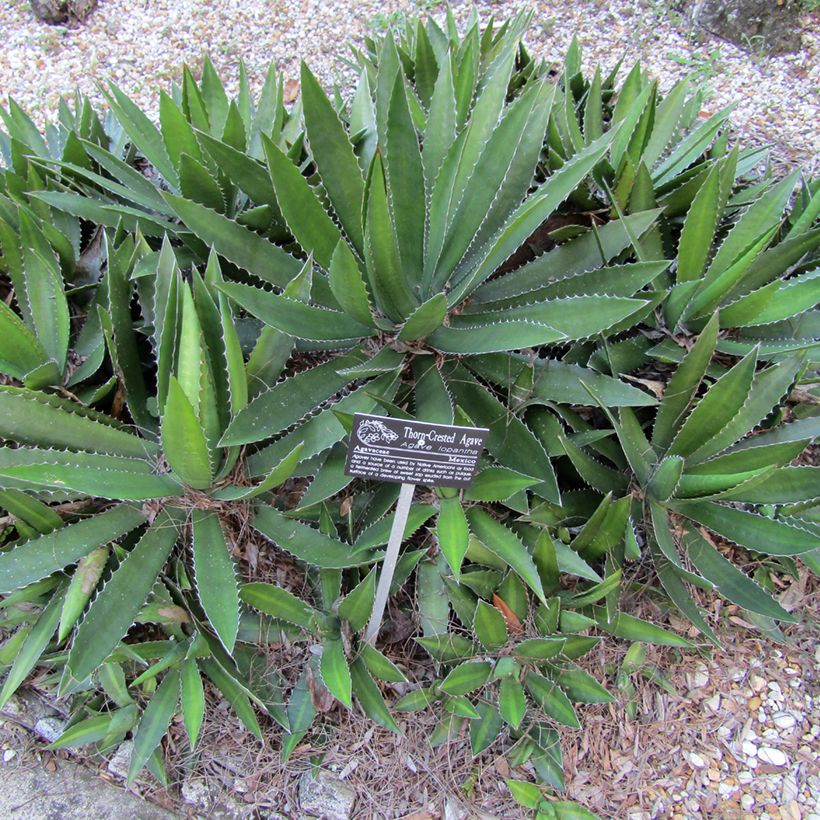

Flowering
Foliage
Plant habit
Botanical data
Agave
lophantha
Asparagaceae
Agave univittata, Agave heteracantha
North America
Other Agave
View all →Planting and care
Plant Agave lophanta in full sun, preferably in poor, even stony, chalky, sandy, very well-drained soil; It dislikes winter damp combined with cold. This is a plant that withstands long, dry summers very well, perfectly suited to the Mediterranean climate. It will tolerate frosts down to -12°C at peak under good conditions (dry soil).
Container cultivation: As the plant reaches a considerable size, it should be grown in wide pots, with drainage holes at the bottom, preferably in terracotta or wooden planters. Use cactus compost or a mix of potting soil, garden soil and coarse sand (or fine gravel). Place a layer of clay pebbles at the bottom of the pot. Depending on the climate, it will need to be stored in a cold greenhouse over winter, protected from severe frosts, as potted plants are more sensitive to frost than those planted in the ground.
Planting period
Intended location
Care
Planting & care advice
This item has not been reviewed yet - be the first to leave a review about it.
Similar products
Haven't found what you were looking for?
Hardiness is the lowest winter temperature a plant can endure without suffering serious damage or even dying. However, hardiness is affected by location (a sheltered area, such as a patio), protection (winter cover) and soil type (hardiness is improved by well-drained soil).

Photo Sharing Terms & Conditions
In order to encourage gardeners to interact and share their experiences, Promesse de fleurs offers various media enabling content to be uploaded onto its Site - in particular via the ‘Photo sharing’ module.
The User agrees to refrain from:
- Posting any content that is illegal, prejudicial, insulting, racist, inciteful to hatred, revisionist, contrary to public decency, that infringes on privacy or on the privacy rights of third parties, in particular the publicity rights of persons and goods, intellectual property rights, or the right to privacy.
- Submitting content on behalf of a third party;
- Impersonate the identity of a third party and/or publish any personal information about a third party;
In general, the User undertakes to refrain from any unethical behaviour.
All Content (in particular text, comments, files, images, photos, videos, creative works, etc.), which may be subject to property or intellectual property rights, image or other private rights, shall remain the property of the User, subject to the limited rights granted by the terms of the licence granted by Promesse de fleurs as stated below. Users are at liberty to publish or not to publish such Content on the Site, notably via the ‘Photo Sharing’ facility, and accept that this Content shall be made public and freely accessible, notably on the Internet.
Users further acknowledge, undertake to have ,and guarantee that they hold all necessary rights and permissions to publish such material on the Site, in particular with regard to the legislation in force pertaining to any privacy, property, intellectual property, image, or contractual rights, or rights of any other nature. By publishing such Content on the Site, Users acknowledge accepting full liability as publishers of the Content within the meaning of the law, and grant Promesse de fleurs, free of charge, an inclusive, worldwide licence for the said Content for the entire duration of its publication, including all reproduction, representation, up/downloading, displaying, performing, transmission, and storage rights.
Users also grant permission for their name to be linked to the Content and accept that this link may not always be made available.
By engaging in posting material, Users consent to their Content becoming automatically accessible on the Internet, in particular on other sites and/or blogs and/or web pages of the Promesse de fleurs site, including in particular social pages and the Promesse de fleurs catalogue.
Users may secure the removal of entrusted content free of charge by issuing a simple request via our contact form.
The flowering period indicated on our website applies to countries and regions located in USDA zone 8 (France, the United Kingdom, Ireland, the Netherlands, etc.)
It will vary according to where you live:
- In zones 9 to 10 (Italy, Spain, Greece, etc.), flowering will occur about 2 to 4 weeks earlier.
- In zones 6 to 7 (Germany, Poland, Slovenia, and lower mountainous regions), flowering will be delayed by 2 to 3 weeks.
- In zone 5 (Central Europe, Scandinavia), blooming will be delayed by 3 to 5 weeks.
In temperate climates, pruning of spring-flowering shrubs (forsythia, spireas, etc.) should be done just after flowering.
Pruning of summer-flowering shrubs (Indian Lilac, Perovskia, etc.) can be done in winter or spring.
In cold regions as well as with frost-sensitive plants, avoid pruning too early when severe frosts may still occur.
The planting period indicated on our website applies to countries and regions located in USDA zone 8 (France, United Kingdom, Ireland, Netherlands).
It will vary according to where you live:
- In Mediterranean zones (Marseille, Madrid, Milan, etc.), autumn and winter are the best planting periods.
- In continental zones (Strasbourg, Munich, Vienna, etc.), delay planting by 2 to 3 weeks in spring and bring it forward by 2 to 4 weeks in autumn.
- In mountainous regions (the Alps, Pyrenees, Carpathians, etc.), it is best to plant in late spring (May-June) or late summer (August-September).
The harvesting period indicated on our website applies to countries and regions in USDA zone 8 (France, England, Ireland, the Netherlands).
In colder areas (Scandinavia, Poland, Austria...) fruit and vegetable harvests are likely to be delayed by 3-4 weeks.
In warmer areas (Italy, Spain, Greece, etc.), harvesting will probably take place earlier, depending on weather conditions.
The sowing periods indicated on our website apply to countries and regions within USDA Zone 8 (France, UK, Ireland, Netherlands).
In colder areas (Scandinavia, Poland, Austria...), delay any outdoor sowing by 3-4 weeks, or sow under glass.
In warmer climes (Italy, Spain, Greece, etc.), bring outdoor sowing forward by a few weeks.


































